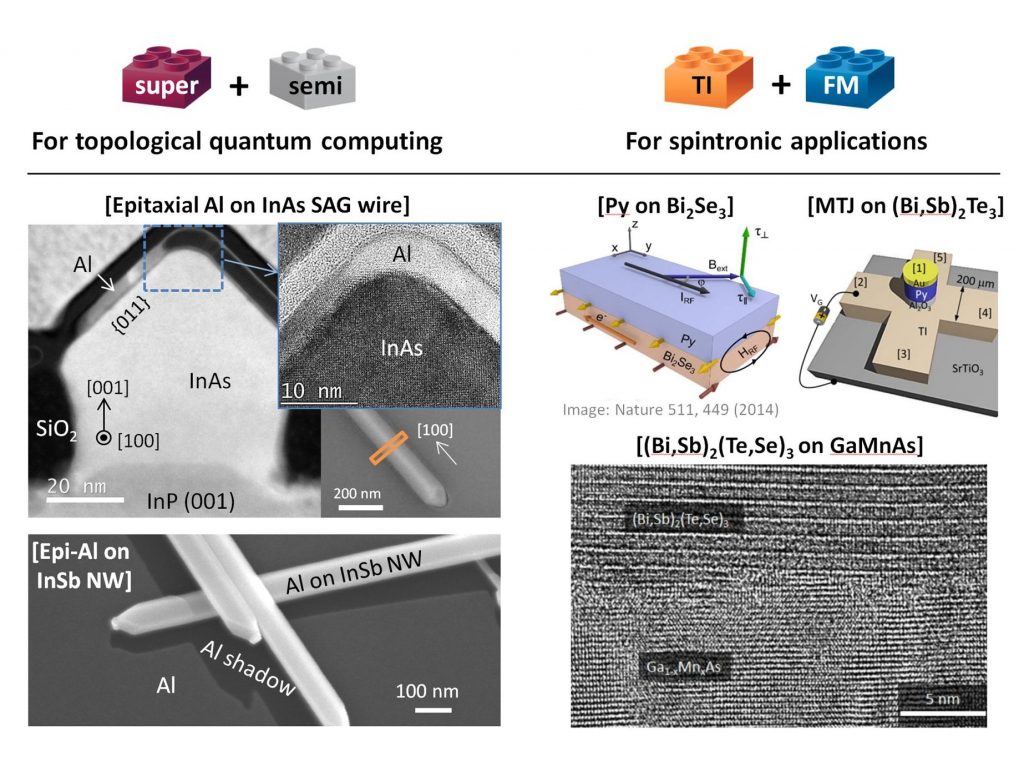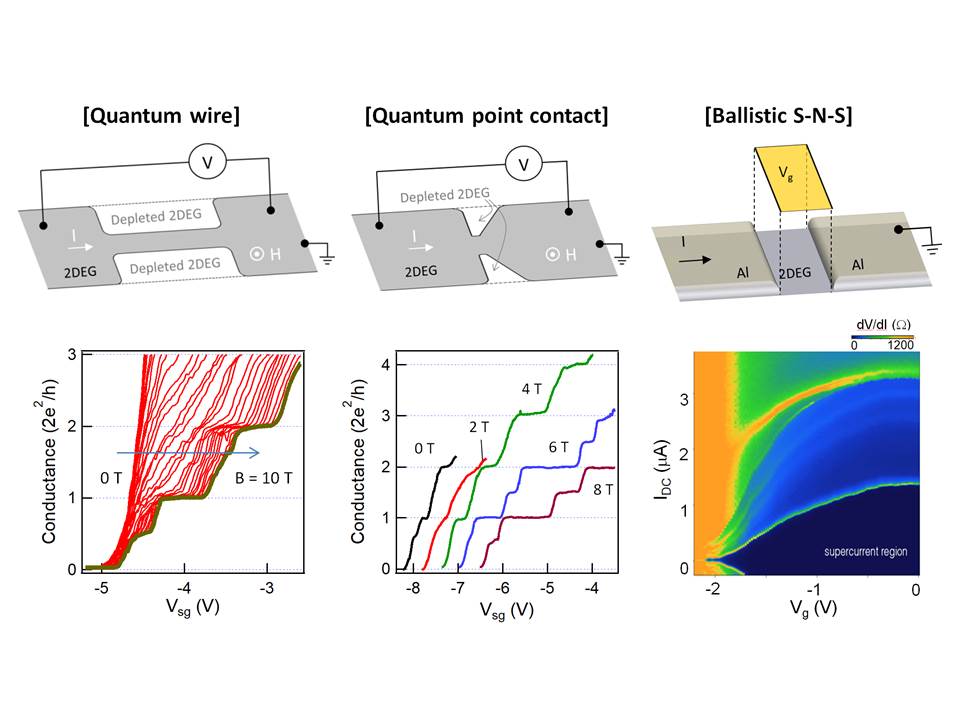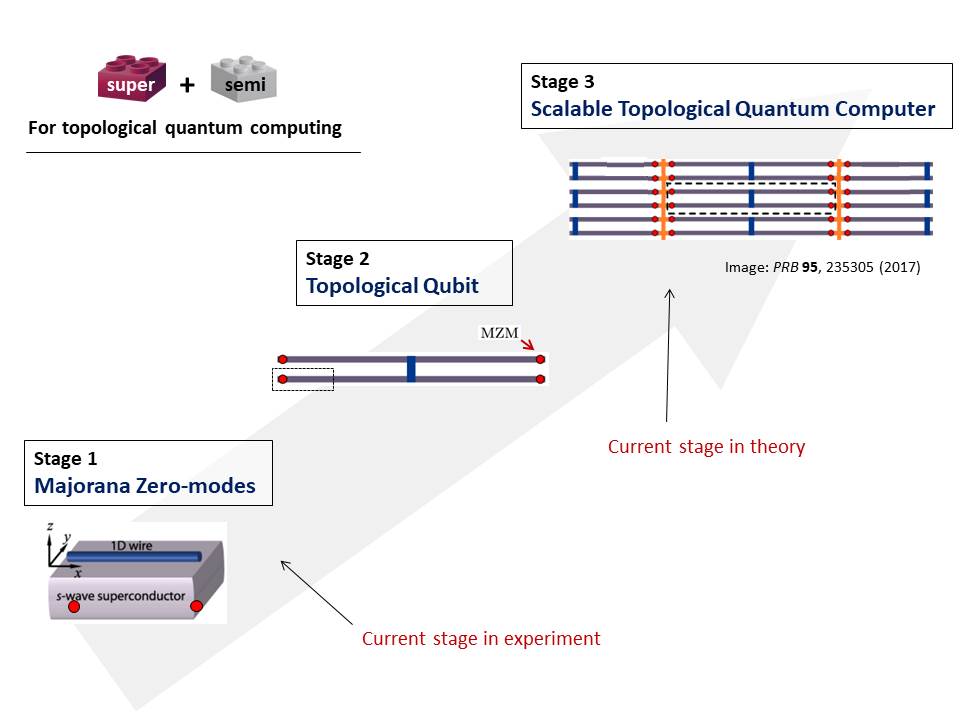RESEARCH TOPICS
Central theme of our research is development of quantum materials, prepared by “epitaxy”, and quantum devices for unveiling fundamental quantum phenomena as well as for exploring future device applications.

Epitaxy of Quantum Materials
In the research field of quantum materials, advances and innovations have been made by “epitaxy”, which includes epitaxial synthesis of single crystals, thin films and hybrid heterostructures with clean interfaces. We employ molecular beam epitaxy (MBE) to synthesize high-quality quantum materials systems.
We are developing low-dimensional semiconductor systems, such as 1D nanowires, 2D electron gases, and networks of quantum wires by selective area growth, as well as topological materials such as topological insulators. Our research extends to structural/electronic/magnetic characterizations and device applications of the quantum materials systems.

Hybrid Quantum Materials Systems
Combining different materials often leads to novel phenomena and functionalities. Among various combinations, our focus is on superconductor-semiconductor, superconductor-topological material, and topological insulator-ferromagnet hybrid systems. 1D semiconductor (or topological material) systems proximitized by a superconductor can exhibit topological superconducting states, hosting Majorana zero modes that can be used for topological quantum computing. Topological insulators are promising for spintronic device applications due to spin-polarized surface states. Efficient spin-charge conversion has been demonstrated in hybrid systems.

Quantum Transport
Electron transport in mesoscopic/nanoscale devices, at low temperatures, reveals quantum mechanical behavior of quantized energy levels. We carry out fine fabrication of nanostructures and careful transport measurements to evidence sophisticated quantum phenomena in the quantum materials systems prepared by “epitaxy”. We study quantum transport properties in structures such as quantum wires, quantum point contacts, quantum-Hall channels, and Aharonov-Bohm loops, as well as induced superconductivity in superconductor-normal and superconductor-normal-superconductor junctions.

Majoranas towards Quantum Computing
Recent advances in materials synthesis have resulted in evidencing the signatures of topological superconductivity and Majorana zero modes. Our focus lies on the next-stage experimental milestone of realization of topological quantum bits (qubits), consisting of multiple Majorana zero-modes, towards a scalable topological quantum computer. We develop scalable platforms of topological superconductor quantum wire networks. The scalable approaches include 2D electron gases and in-plane wire networks as well as topological materials systems.
RESEARCH FACILITIES
Lab Equipment @ Institute for Advanced Materials and Manufacturing (IAMM), UTK
– Dual-chamber MBE system (III-V semiconductor chamber and superconductor chamber)
– Chemical hood
IAMM Research Core Facilities @ UTK
– Electromagnetic Properties Lab (PPMS, SQUID)
– Electron Microscopy Center (SEM, FIB, TEM)
– X-Ray Diffraction Core Facility (XRD)
– Micro-Processing Research Facility (Photolithography)
CNMS User Facilities @ ORNL
– Nanofabrication Research Laboratory (e-beam Lithography, ALD, metal deposition, PECVD, RIE, SEM)